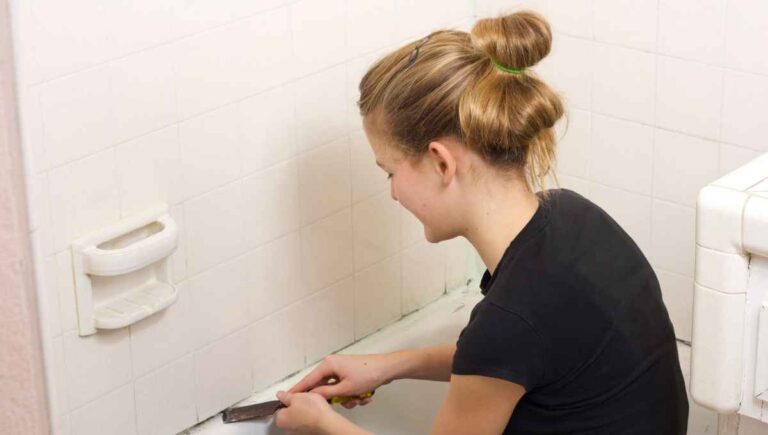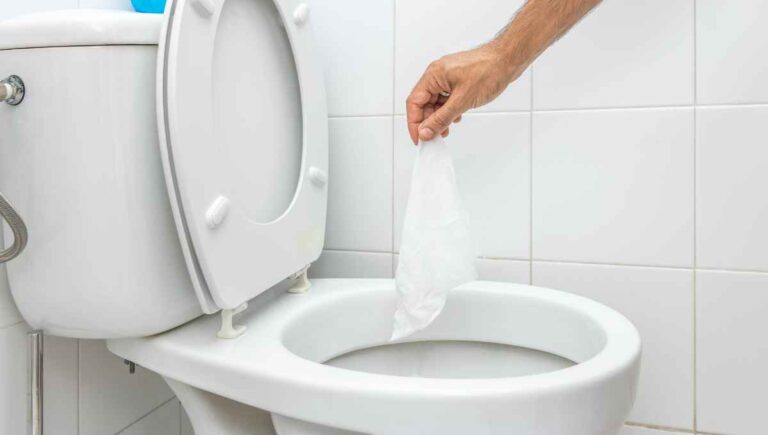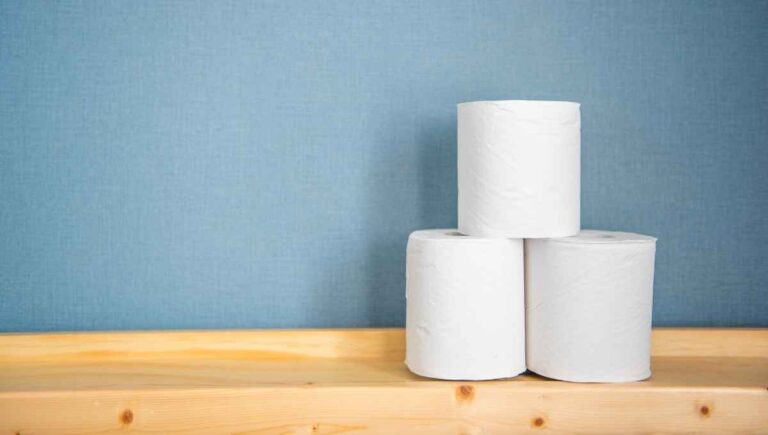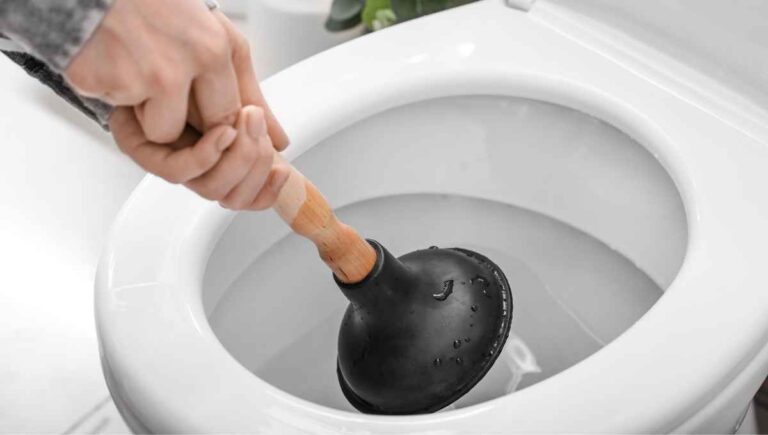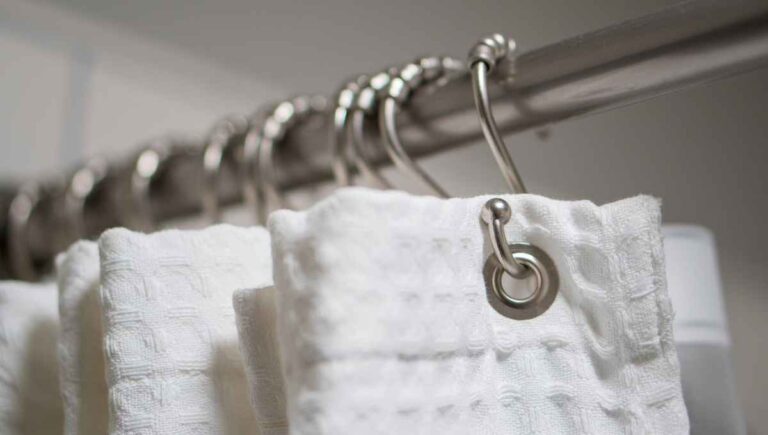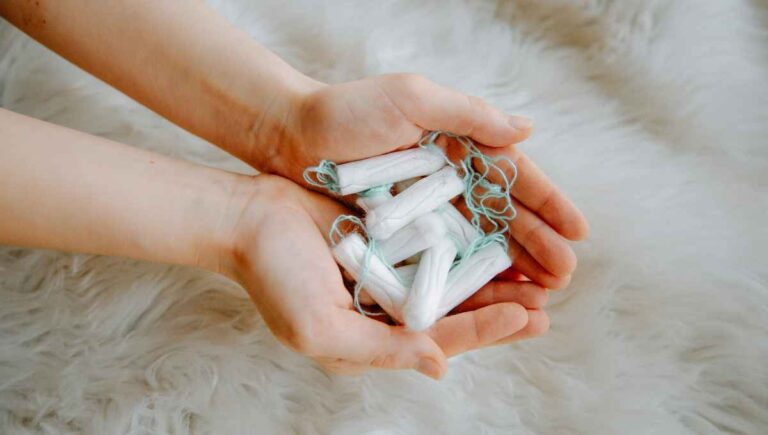Should You Flush the Toilet After Peeing? (We Asked Experts)

Ah, the age-old question, to flush the toilet after peeing or not. While that question may make the faint of heart squirm, it is actually pretty important. No matter which side you land on, there are plenty of reasons for and against letting urine sit.
There is no medical reason why you should flush the toilet every time you pee. While you don’t want to let the same water sit in your toilet for an extended period of time, there is no harm done by not flushing. If you’re looking to save water, consider only flushing after every other use.
That being said, there are exceptions to every rule. There will always be the occasion when it’s best practice to flush every time and plenty of reasons to not.
Stick with us to discuss both sides of the argument, and see what the experts have to say!
This post contains affiliate links. This means Household Blogger may earn a commission should you make a purchase using any of our links. Please refer to our full affiliate disclosure policy for full details.
Here’s a Quick Pro Tip!
Worried about saving water? Switch out your old, low-efficiency toilet with one of these options to save your water bill, and help out the environment!
Here are some of our favorite water-saving toilets:
1. Dual-Flush Toilets – These high-efficiency toilets only use 1.6 gallons of water per use.
2. High-Efficiency Toilet – This Swiss Madison option can cut your water bill in half!
3. Dual-Flush Valve – If you’re not quite ready to take the plunge into buying a new toilet, consider installing this valve to help save water.
Knowing When to Flush
If you and the other household members are hosting great debates about the merits of flushing your toilet after peeing, we’ve gotten ahold of the experts to verify, is it okay to not flush every time?
Should You Flush After Urinating?
If you are healthy and hydrated, it won’t harm you or your toilet to let it mellow for a use or two. Make sure that you are flushing at least once a day, or if there is any solid waste involved. If you’re not flushing, make sure the lid is down!
This practice serves to save a startling amount of water. Did you know that each flush uses at least a gallon of water?
So even cutting your flushes to every other use will slash your water consumption!
How Often Should You Flush Your Toilet?
If your household has agreed on a mellow policy, you should still be flushing your toilet once a day. Flushing at least once a day prevents build-up and unpleasant odors from lingering.
Also, ensure you are cleaning your toilet regularly. Regular cleaning prevents the formation of mold, foul odors, and potential discoloration of your toilet bowl.
Having a clean toilet bowl is also the best policy if you’re not going to flush every time you pee.
Should I Flush Every Time I Use the Toilet?
Flushing the toilet after every use is not strictly necessary while you’re at home. However, if you’re using a public restroom, it is a different story. If you’re out and about, consider others and flush no matter what.
If you’re at home and everyone you live with is okay with the policy, you may skip a flush or two when you’ve only peed.
You have nothing to worry about as long as you don’t leave it to sit for more than a day. This practice saves water and actually prevents the spread of germs!
Is It Okay to Not Flush Every Time You Use the Toilet?
If you are in your own home, not in a public restroom, it is probably okay not to flush every time you use the toilet. If there are any solids, flush them away, but it’s okay to let urine sit for a small amount of time.
Make sure you keep the lid closed and flush if you notice any odors.
Allowing some mellowing means you’re conserving water. Just by only flushing every other time, you’ll save, on average, over nine gallons of water a day!
That’s a significant saving on your water bill and the environment.
You might also enjoy our post on What To do If Toilet Water Splashes on You
Consequences of Not Flushing
While people on both sides of the mellow argument have strong feelings about why their way of thinking is correct, there are pros and cons on both sides.
We’ve gathered the most common questions so that you can get all your answers in one place.
What Happens When You Don’t Flush?
If you don’t flush every time you use the restroom, you’re allowing the waste product to sit in the toilet bowl for an extended period of time. This doesn’t have to be a big issue if you only urinated.
Not flushing the toilet every time you urinate can save more than nine gallons of water a day. It can also stop germs from spreading when the toilet flushes.
However, if you’re not at home, it is still considered best practice to flush no matter what. Make sure you wash your hands after!
What Will Happen if I Let My Pee Sit In the Toilet Without Flushing?
If you let your pee sit in the toilet without flushing (a.k.a. “Mellowing”) for an hour or two, nothing significant is likely to happen. You’ll save water too! Although, if you have a UTI or other issues, it may get a bit smelly.
If you are healthy or don’t mind a little odor, not flushing every single time you pee can conserve water.
Another way to conserve water is to invest in a dual flush or high-efficiency toilet. Any option can save you and your water bill!
What Are the Consequences of Not Flushing the Toilet?
By not flushing the toilet every time you use the bathroom, you can save more than nine gallons of water a day! Other, not-so-pleasant consequences can also occur. For instance, your housemates may not appreciate it.
If you’re going to instill a mellowing policy, be sure to discuss it with anyone who shares your living space.
Additionally, don’t assume this rule applies outside your home. If you’re visiting a friend or using a public restroom, be sure to flush, no matter what!
What Happens to Pee When It Sits?
If you’re healthy and hydrated, not much should happen to pee if you let it sit in the toilet bowl, within reason. If you leave it for more than a couple of hours, you may notice an unpleasant odor.
Leaving urine sitting in the bowl of your toilet for too long can also lead to an increase in mineral deposits and staining in your bowl.
So if you’re noticing discoloration or foul odors, be sure you’re cleaning your toilet bowl often enough.
Is It Okay if I Left Pee in My Toilet for a Week?
While leaving pee in your toilet for short periods of time won’t have negative consequences, letting it sit for a week isn’t recommended. Allowing urine to sit that long invites strong foul odors and may attract unwelcome attention.
Leaving urine to sit for a week can also lead to staining of your toilet. If this is the case, you might need something as strong as bleach to help you lift the stain.
It’s best practice to flush your toilet at least once a day to keep the pipes clear and prevent odors and staining.
Water Problems
Now that we’ve discussed how often we should be flushing let’s talk about water.
Not flushing every time you urinate may save up to nine gallons of water a day, but what else is there to know about water conservation? We’ve got the answers below. Keep reading!
Why Should You Flush the Toilet After Use?
If you are in public or are a guest in someone’s home, social rules dictate it’s best practice to flush the toilet after every use, no matter what. Always wash your hands thoroughly after using the restroom!
The main argument for flushing every time you use the toilet is to prevent odors and stains from forming in your bathroom. And, some people just find the idea of mellowing gross.
It makes sense if you’ve got a weak stomach. If you decide to adopt a mellow policy, be sure to discuss it with other household members first!
Can Urine Damage a Toilet?
Thankfully, urine left sitting in a toilet bowl for a couple hours, will not damage a toilet. The water in your toilet bowl dilutes urine’s acidity, which in turn neutralizes it.
However, leaving urine sitting for an extended period of time may leave some staining. If you don’t flush every time, it’s considered best practice to make sure you’re flushing at least once a day.
You might also enjoy our post on How to Fix Cloudy Toilet Water
Does Leaving Pee in the Toilet Stain It?
If you leave pee in your toilet for extended periods of time, the urine and the mineral deposits already present in the toilet bowl water can cause staining to occur in the toilet bowl.
Flushing your toilet at least once a day should mitigate the worst of the stains. It’s also important to keep your toilet clean.
If you are scrubbing down your toilet, including the bowl, once or twice a week, staining should not be happening.
Does Urine Erode Porcelain?
While human urine is slightly acidic, it is not nearly acidic enough to erode porcelain, especially if mixed with water. You may see some lime and mineral build-up on the sides of your toilet bowl, but urine won’t actually damage the bowl.
If you’re concerned about urine sitting in the toilet and eroding your bowl, you can rest easy. If you think this is an issue, simply keep flushing every time.
Just know that if you miss a flush, you won’t be ruining your new toilet.
Does Flushing the Toilet Less Save Money?
Not flushing every time you urinate can save you a decent amount of money. Assuming you currently flush the toilet six times a day, each flush uses around 1.6 gallons of water. Each flush is costing you around 1 penny or $0.01 (depending on the price of your water.)
$0.01 times six times a day is about $0.06, so that’s six cents a day flushing. It sounds like nothing, but it is over $20 a year, just flushing.
Even flushing every other time would slash that in half, a savings of at least $10 a year. That can add up over 50 years!
Does Flushing the Toilet Use a Lot of Water?
How much water you use each time you flush the toilet depends on a few factors. The most prevalent factor is what type of toilet you have. Assuming you have a toilet built after 1994, you’re probably flushing around 1.6 gallons per flush.
However, if you have an older model toilet, you can be using up to 7 gallons per flush. That’s a lot of money down the toilet, literally!
If you flush 7 gallons at a time, at $0.01 multiplied by six times a day, over the course of a year, you’re flushing away $150 a year! Yikes.
Is Flushing the Toilet Bad for the Environment?
If you have a newer toilet, each flush is probably using around 1.6 gallons of water. However, if your toilet is an older model, each flush could be using up to seven gallons. That’s a drastic difference, both for your wallet and the environment.
Currently, manufacturers are pumping out low water usage high-efficiency toilets to prevent water waste. While these kinds of toilets definitely do their part to prevent harming the water table, older models can still be a problem.
How Can You Save Water by Flushing a Toilet?
If you want to flush every time you use the restroom and still save money, consider getting a high-efficiency toilet. These use less water and therefore can help conserve water while still leaving you feeling clean.
Another option is to get a dual flush toilet. These toilets allow you to choose between options. Option one flushes with less water than option two, for when you’ve only urinated.
We’ll leave you to assume what option #2 is for.
What Is Considered a Low Flush Toilet?
A low flush toilet is a toilet that uses around 1.6 gallons of water per flush. They are the most common toilets currently on the market, as they are all that’s allowed by the Environmental Protection Agency.
The EPA mandated the use of low-flush toilets over twenty years ago to stop harmful water waste. These toilets often rely on gravity to do the work instead of extra water.
Not wasting water is much better for the environment and your water bill!
You might also enjoy our post on If Toilet Seat Covers Can be Flushed
Related Questions
Why Shouldn’t You Pee in the Shower?
Urinating in the shower can actually program your brain to urinate every time you hear running water. Additionally, if you have an open wound, you can possibly contaminate it with your urine.
Suppose you have a cut or open wound on your feet. In that case, you can contaminate that injury and can get a number of infections, including MRSA.
Should You Close the Toilet Lid After Flushing?
When possible, you should always close the toilet lid BEFORE flushing, not after. Closing the lid prevents the spread of germs from reaching all the high touch points surfaces in your bathroom.
If you are using a public bathroom without a lid, stand as far away from the toilet as you can before flushing, and no matter what the situation is, be sure to wash your hands thoroughly after flushing.
This is the best way to prevent the spread of germs!
How Can You Flush a Toilet Quietly at Night?
If you’re up frequently to use the facilities at night, you’ve probably wondered how you can flush more quietly, so as not to wake the household. Consider tightening all the pipes and adjusting your water inflow.
Another great option to keep your flushing noises to a minimum is to install a quiet fill flush valve. This valve can help you save water and quiets the force of your toilets flush. It also provides a dual flush option.
Final Thoughts
No matter which side of the fence you land on when it comes to mellowing, you can’t argue that using that method can save you a significant amount of water.
Just make sure everyone you live with is as dedicated as you are if you go with this option!




